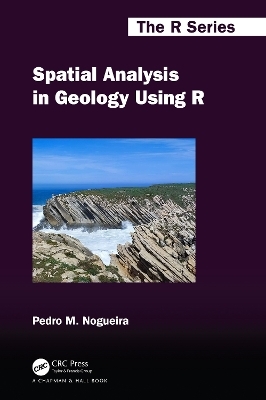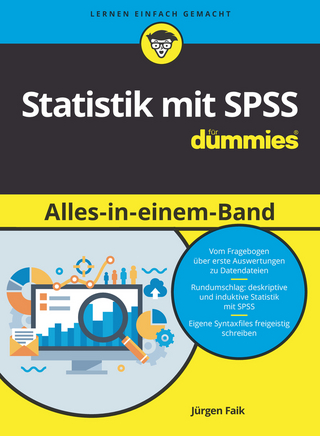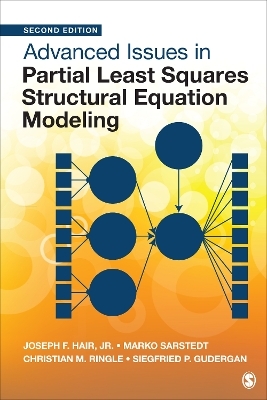
Spatial Analysis in Geology Using R
Chapman & Hall/CRC (Verlag)
978-1-032-65032-6 (ISBN)
The integration of geology with data science disciplines, such as spatial statistics, remote sensing, and geographic information systems (GIS), has given rise to a shift in many natural sciences schools, pushing the boundaries of knowledge and enabling new discoveries in geological processes and earth systems. Spatial analysis of geological data can be used to identify patterns and trends in data, to map spatial relationships, and to model spatial processes. R is a consolidated and yet growing statistical programming language with increasing value in spatial analysis often replacing, with advantage, GIS tools. By providing a comprehensive guide for geologists to harness the power of spatial analysis in R, Spatial Analysis in Geology Using R serves as a tool in addressing real-world problems, such as natural resource management, environmental conservation, and hazard prediction and mitigation.
Features:
Provides a practical and accessible overview of spatial analysis in geology using R
Organised in three independent and complementary parts: Introduction to R, Spatial Analysis with R, and Spatial Statistics and Modelling
Applied approach with many detailed examples and case studies using real geological data
Presents a collection of R packages that are useful in many geological situations
Does not assume any prior knowledge of R; all code are explained in detail
Supplemented by a website with all data, code, and examples
Spatial Analysis in Geology Using R will be useful to any geological researcher who has acquired basic spatial analysis skills, often using GIS, and is interested in deepening those skills through the use of R. It could be used as a reference by applied researchers and analysts in public, private, or third-sector industries. It could also be used to teach a course on the topic to graduate students or for self-study.
Pedro Nogueira received his undergraduate and PhD degrees in Geology from Porto University. He completed the curricular part of an MSc in Engineering Informatics at Évora University. From 1997 to 2022, he was Assistant Professor at Évora university and currently holds the position of Associate Professor. He has more than thirty years of experience as a field geologist and mineral resources specialist. Pedro has worked in diverse countries such as East Timor, Mozambique, and the Dominican Republic. He has published more than 30 peer reviewed papers in international journals and has served as an editor of several books and book chapters. Pedro is a full member of the Earth Sciences Institute and has participated or served as a project leader or researcher, in more than 15 funded projects, several of which are internationally run. His current research interests are centered around the study of gold, copper, iron, and rare earth mineral deposits, interweaved with geochemistry, geophysics, remote sensing, and spatial data analysis – spatial intelligence.
1. R as a Geologist’s Tool.. 2. Getting Started. 3. Reading and Writing Data. 4. Data Cleaning and Manipulation. 5. Functions for Everyday Data Analytics. 6. Basic Statistics. 7. Basic Data Visualisation. 8. Putting It All to Work: Part I. 9. Fundamentals of Spatial Analysis.10. Spatial Objects. 11. Going Vectorial. 12. Handling Spatial Data. 13. Putting It All To Work: Part Ii Vectors. 14. Into the Grid with Rasters. 15. Basic Raster Operations. 16. Terrain Operations. 17. Working with Satellites. 18. Putting It All to Work: Part Ii Rasters. 19. Introduction to Spatial Statistics and Modelling Applied to Geology. 20. Point Pattern Analysis. 21. Interpolating Data. 22. Inverse Distance Weighting (Idw). 23. Kriging. 24. The Way Forward.
| Erscheinungsdatum | 10.07.2024 |
|---|---|
| Reihe/Serie | Chapman & Hall/CRC The R Series |
| Zusatzinfo | 7 Tables, black and white; 131 Line drawings, black and white; 131 Illustrations, black and white |
| Sprache | englisch |
| Maße | 156 x 234 mm |
| Gewicht | 798 g |
| Themenwelt | Mathematik / Informatik ► Mathematik ► Computerprogramme / Computeralgebra |
| Naturwissenschaften ► Geowissenschaften ► Geologie | |
| ISBN-10 | 1-032-65032-X / 103265032X |
| ISBN-13 | 978-1-032-65032-6 / 9781032650326 |
| Zustand | Neuware |
| Haben Sie eine Frage zum Produkt? |
aus dem Bereich


